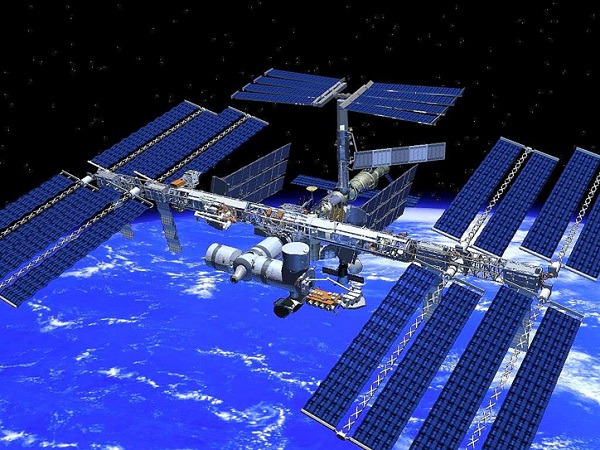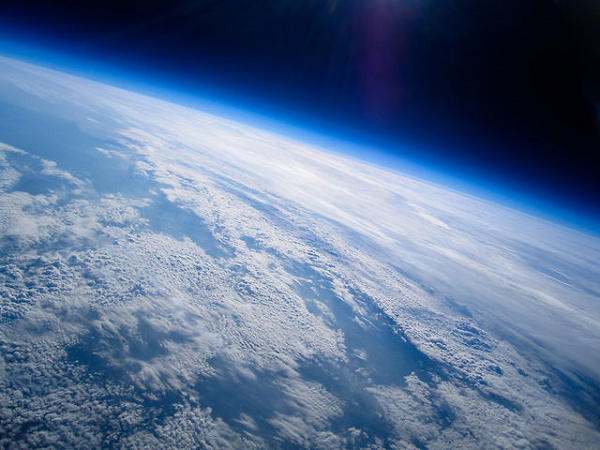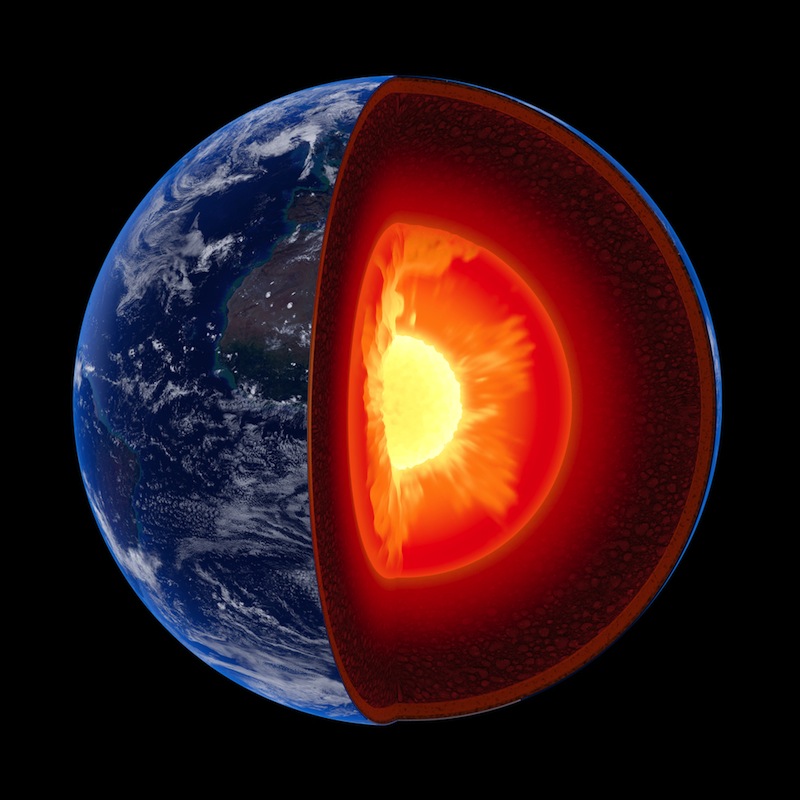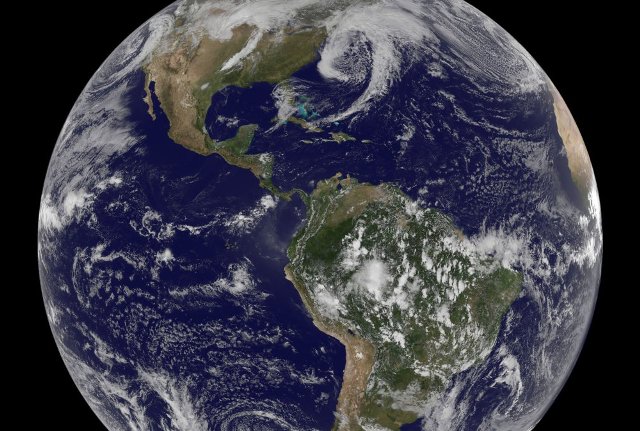Thermosphere
The thermosphere is the second-highest layer of Earth's atmosphere. The temperature of the thermosphere gradually increases with height due to the extremely low density of its molecules. This layer is completely cloudless and free of water vapor.
International Space Station
 source: internet
source: internet
Within this layer of the atmosphere, ultraviolet radiation causes photoionization or photodissociation of molecules, creating ions in the ionosphere. Due to presence of large amount of ions in this layer, cosmic rays are present here. This layer reflects radio waves back to the Earth. This makes radio communication possible.
This is where artificial satellites and space stations are put into orbit. The International Space Station orbits in this layer, between 350 and 420 km.
Exosphere
The exosphere is the outermost layer of Earth's atmosphere. It extends from the exobase, which is located at the top of the thermosphere at an altitude of about 700 km above sea level, upper limit of this layer is quite uncertain.
 source: internet
source: internet
Exosphere is mainly composed of extremely low densities of hydrogen, helium and several heavier molecules including nitrogen, oxygen and carbon dioxide closer to the exobase. The atoms and molecules are so far apart that they can travel hundreds of kilometers without colliding with one another. Thus, the exosphere no longer behaves like a gas, and the particles constantly escape into space.
In this layer Earth's gravity is very weak. The outer part of exosphere is called magnetosphere. The final boundary between the Earth and the outer space is called Magnetopause.
The exosphere contains most of the satellites orbiting Earth.
Van Allen's Radiation Belts
The ionized particles' pressure increase in frequency with increasing heights. There are two belts in the upper atmosphere having a high concentration of ionized particles. This is the last layer of the atmosphere.


